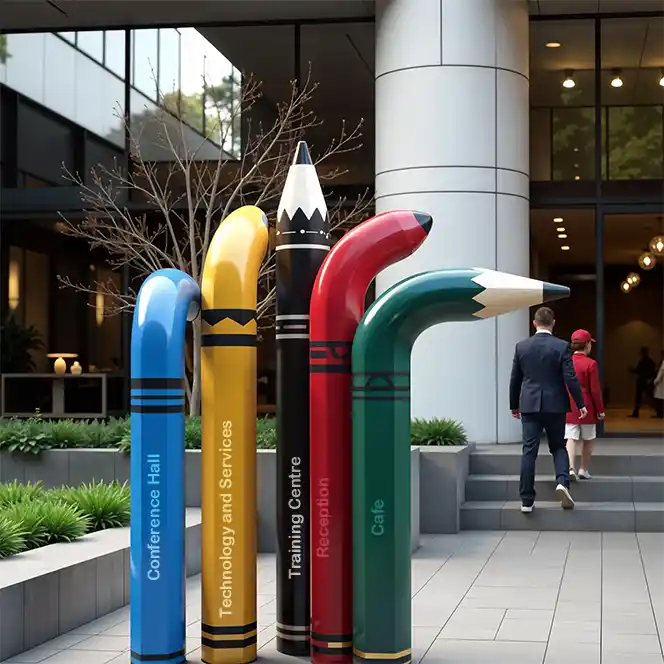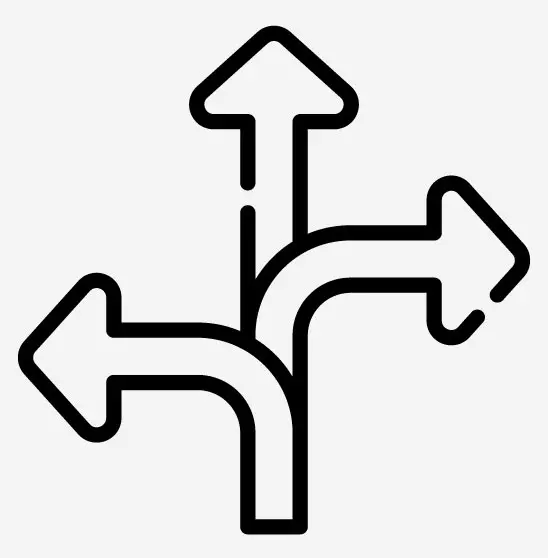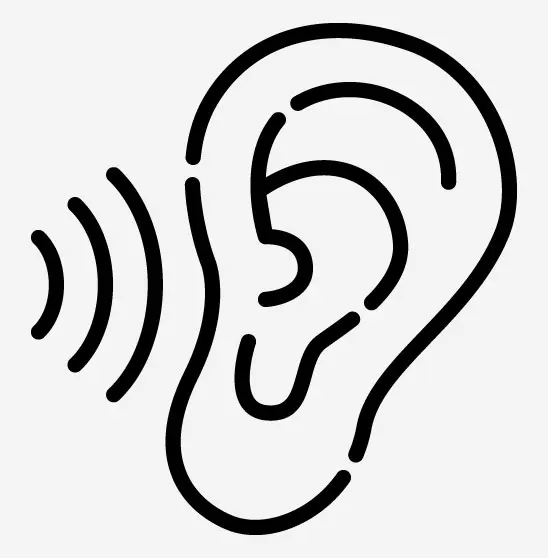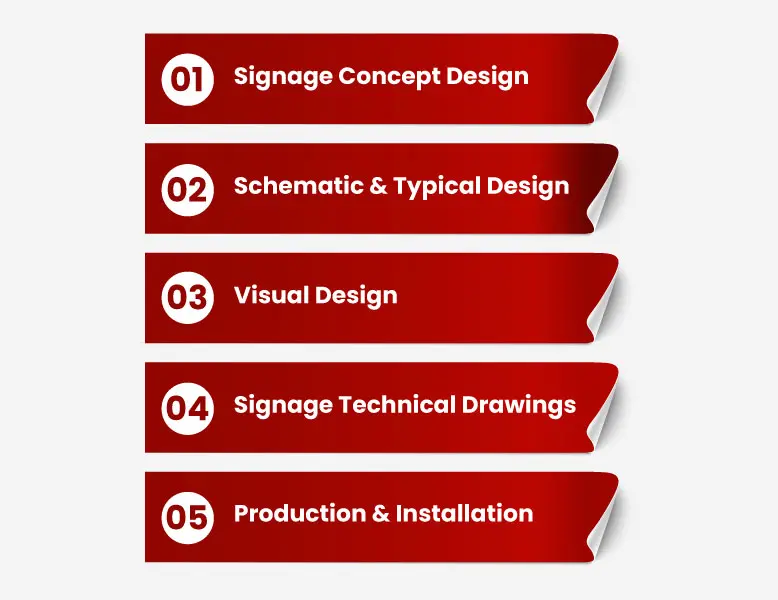NAVIGATION AND WAY FINDING SIGNAGES
Simplified Navigation A physical manifestation of shifts to reduce friction. Choice-ing out the equation for time-poor shoppers. Making the in-store experience more easily navigable.
Creative Approach Creative wayfinding signage designs. Environment perceived movement. Implementing an architectural signage solution.
Customized experience Personalised wayfinding and navigation experiences by connecting digital mediums and newest technologies like AR, AI, and VR.
Principle Centred Design We deeply acknowledge principality while communicating your brand in real-time. We develop and implement designs centred to that.

Signage : The Juggernaut
Whether in life or in any avocation, navigation is vital!
“Where am I? How did I get here? Where should I head?”
The natural intellect can direct you through a cave-space but directional signs are imperative. D’Art’s approach on creative wayfinding signage designs, being a retail design agency is unique, out of box, and unprecedented. We incorporate both time periods of traditional and modern.Traditional times are contemporary in their own way and the very essence is the most needed. Modern times are laced with pandemic fear, so we have to think in the direction of social distancing signs.
If we take up in the box, D'Art wayfinding consulting services include:
- Signage/Wayfinding Master Plans
- Electronic and Static Signage Systems
- Interactive Wayfinding
- Wayfinding Management Systems
- Identity Development
- Place making Elements
- Public Signage and Graphics
- Project Involvement
Moreover, signages are a measure for brand visibility. The above mentioned points help us to create that ‘visibility’ factor while performing signage services for the brand.
OUR APPROACH
WE APPROACH NAVIGATION AND WAYFINDING SIGNAGES BY THREE VIEWPOINTS:
SIGHT | DIRECTION | SOUND |
Blending with buildings, environment perceived movement, the use of space, identifying workable solutions to enable effortless navigation.
Our Team Organizes Signage Design To Final Implementation In Five Phases:
Phase 1: Overall Graphics And Signage Concept The purpose of this phase is to create a human platform for the whole project and to make all the necessary preparations for the first design phase. This phase consists of the following:
|  |
Phase 2: Schematic And Typical Design
For the second phase a design of individual signs that will fulfill the navigational and instructional needs of the project. This phase will result in providing all the data and requirements for the design of the visual aspects of all the signs.
This phase consists of the following:
- Examine architectural master plan, site plans and architectural drawings
- Marking major traffic flows on the plans and realistic viewing distances for signage
- Developing and finalizing the list of sign types
- Developing a coding system for all signage
- Finalizing the plans and indicating global locations of all signs
- Develop outline specifications
- Review / presentation meetings with signage committee or client
Phase 3: Visual Design
The visual design phase consists of the following:
- Preparing the typeface chart. Including the standard sizes to be used
- Developing the chart of all the graphic elements, like symbols, pictograms and illustrations
- Composing the color chart
- Developing a design for each individual sign type in elevation drawing
- 3D models, and/or real-size mockups
Phase 4: Technical Drawings & Signage Schedule Chart
- This phase includes the incremental stages of product development along with the creation of contract documents that will form the package for tender.
- Drafting a working drawing for each sign type.
- Developing bill quantity for each sign type.
- Drafting the specifications for all materials, construction details, fasteners, type of finishing and colours.
- Developing a complete sign schedule and location plans to identify sign location and placement, type and information content.
- Review and approval by the client.
- Assisting the client in manufacturer selection and bidding process.
Phase 5: Production & Installation
FABRICATION
The D'art team includes skilled signage designers, planners, sign engineers and craftspeople with the knowledge that only comes from extensive hands-on experience. This means that our network capabilities as a signage company ensure that your solution meets the quality standards for which we are known. We have multiple manufacturing facilities and alliance partners strategically located throughout India. So, whether your project is local or national, we have a facility and the capabilities to serve you.
INSTALLATION
When implementing an architectural signage solution, D'art considers every aspect involved – from engineering and signage code requirements to installation logistics – to ensure the smoothest installation for the client and visitors alike. Whether your program consists of interior signage, exterior signage or both, D'art has the expertise you can trust.
All these phases are meshed up everytime we deliver our services of Navigation And Wayfinding Signages.
As the name suggests, wayfinding can be described as utilizing a signage that consists of different colors, themes, and designs, that helps people to orient themselves and navigate from one place to another.
A retail business can experience various benefits in case it hires a professional agency that provides wayfinding solutions. Some of the main advantages will include points such as improved customer navigation, enhanced brand equity, safety and security of the customers, glorified and aesthetic retail appeal, increased footfall and boosted sales.
When a retail business adds wayfinding signages in its retail store, the customers will not have to spend much time finding a specific product that they wish to purchase. Also, they will get informed about the new launches and other information about different products that are present in your store. Hence, there is a chance that customers will view the product, and they might also make a purchase as well. All this will significantly contribute to providing a smoother and more enjoyable shopping experience to the people along with improving the overall efficiency of your business.
Yes! For sure! When a retail business decides to add navigating signage, the overall aesthetic appeal of their retail store will automatically be enhanced. Hiring professional services regarding the same can even add more to the overall appearance of a retail brand. With creative sign designs, attractive colors, and exciting content, customers and employees, both will experience a very pleasant and engaging environment and retail experience. You will be thrilled to know that D’Art Private Limited provides complete navigation and way finding signage services to retail brands. From designing signage to implementing it appropriately in your retail store, we will do it all for you.
It’s experiential. And it is imperative to distinguish between directing and informing in wayfinding. Modern technologies, like smart signage, mobile devices, and kiosks, open up a new frontier of possibilities. A key finding in the wayfinding analysis is that innovative, user-centered applications can enhance the human experience (though they are available but not to an experiential extent).
In retail stores, wayfinding signages can help in-store customers find their way to their destination more quickly, and make it easier for staff to interact with customers. Ultimately, a good customer experience boosts your sales and revenue.
These days, brands are using digital signage wayfinding to improve the customer experience, as it is a modern and effective method for doing so due to the following reasons - • A touchscreen display allows users to find their way easily and save time, improving their experience and encouraging them to return to your campus.
It is a great opportunity for brands and their branding agencies to brand these navigational and wayfinding signages. The signages can be branded both online and offline for the promotion of a product or brand itself. They can also be integrated into OOH platforms for maximum exposure.
Yes of course. Here are the ways that can help in generating revenue from digital wayfinding - • Visitor Frequency Boost • Boost upselling and cross-selling • Creating additional revenue streams
Innovative signages designed in a creative way enhance a retail store's overall visibility, attract foot traffic, and communicate key brand messages effectively.